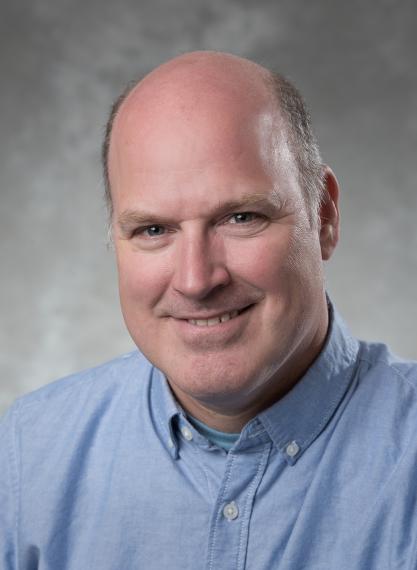Stefan Kycia

Find Related People by Keyword
Instrumentation
With students and University of Guelph Staff, Dr. Stefan W. Kycia has assembled a state-of-the-art ‘in-house’ x-ray diffraction and scattering laboratory.
Capabilities
The Kycia group conducts x-ray diffraction and scattering experiments at the Canadian Light Source in Saskatoon. These experiments are conducted during visits or remotely by online connections. Kycia’s laboratory is aimed at solving the structure of novel materials such as nanoparticles and technologically important epitaxial structures. The x-ray lab serves as a resource to other research groups, inside and outside the University of Guelph. The Kycia group is using the U of G x-ray lab to enable significant amount development of innovative instrumentation and methods to be incorporated into the Brockhouse Sector Facility in the Canadian Light Source (CLS) in Saskatoon.
Education and Employment Background
Kycia obtained his PhD in Condensed Matter Physics from Iowa State University in 1995. He then worked as a staff researcher at the Cornell High Energy Synchrotron performing x-ray diffraction based condensed matter physics research. He also worked at the Laboratorio Nacional de Luz Sincrontron in Brazil where he was the head of the x-ray diffraction group. There, Kycia led the design and construction of three x-ray diffraction beamlines and organized Brazil’s x-ray diffraction synchrotron user community. Kycia joined the University of Guelph’s Department of Physics in 2003, where he is now a Professor, Interim Department Chair and Co-op Advisor.
Research Themes
The determination of crystalline structure has traditionally been accomplished by means of single crystal and polycrystalline x-ray diffraction techniques. Both have been developed extensively and have had great success over the years. Nanoscience has presented several fundamental problems that cannot be solved by current techniques of any kind, therefore hindering the progress in the understanding of basic issues. For instance, "what is the atomic arrangement and composition of a nanocrystal?" New, non-traditional x-ray scattering methods must be developed to answer these questions. The Kycia group intends to resolve fine details of the atomic structure nanoparticles and nano-sized structures. Key areas of focus include:
- High energy x-ray diffraction. Kycia and his group are exploring methods including high resolution radial distribution method and anomalous x-ray diffraction, which are proving to be useful with many applications. Kycia’s group studies the chemical composition, strain and elastic energy of self-assembled islands and other epitaxial systems by means of grazing incidence x-ray diffraction. The group is also developing powder diffraction and multiple beam diffraction for ab-initio structure determination of systems ranging from quasicrystals to protein crystals.
- Diffraction and scattering experiments. With funding from an NSERC grant, “Inter-American Materials Science Collaboration” the Kycia group travelled to Brazil to perform experiments at the LNLS synchrotron facility; participate in international workshops on x-ray diffraction; and meet with collaborators.
- Bockhouse Sector for X-Ray Diffraction. Here in Canada, Kycia is contributing to the development of the Canadian Light Source (CLS) in Saskatoon as a member of the Beamtime Advisory Committee. Kycia took the initiative of leading a proposal for a new “Brockhouse Sector for X-Ray Diffraction and Scattering” to be constructed at the CLS. The Brockhouse Sector will provide the Canadian x-ray scattering community with a world class infrastructure. To network Canada's extensive materials preparation and crystal growth expertise in with the CLS, the sector will support a diverse, active and successful community of Canadian and international scientists spanning the dissimilar disciplines of physics, chemistry, geology, environmental science, biology and engineering. The instrumentation will meet the researchers' diverse needs by providing excellent performance over a broad x-ray energy range from 5 to 100 keV.
Highlights
- NSERC Discovery Grant, 2017
- Canada Foundation for innovation, “Brockhouse X-Ray Diffraction and Scattering Sector”
- Brockhouse Beam Team, 2007-
- Elected member of Cornell’s Synchrotron User’s Committee, 2007-2010.
- Elected member of the Canadian Light Source’s Users Executive Committee
- Co-Leader of the Ontario Synchrotron Task Force
- Member of the Ontario Synchrotron Consortium
Media Coverage
Funding Announcements
- The Fountain Pen: U of G Projects Get $14.5 Million from CFI